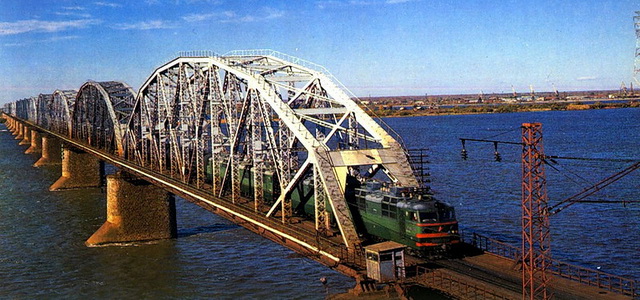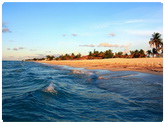| Quick Facts: | Amur River |
|---|---|
| Countries: | Russia & China |
| Source: | Onon River-Shilka River |
| Mouth: | Strait of Tartary |
| Length: | 2.824 km (1.755 mi) |
| Basin: | 1.855.000 km2 (716.220 sq mi) |
| Size: | Tenth longest River |
Amur River Map Location and General Information
The Amur River is located on the border of China and Russia and is a major waterway in the northeastern part of Asia. It’s Chinese name is Heilung Jiang which translates to Black Dragon River. The Amur River is formed by the junction of the Shilka River, which rises in the Russian Federation, and the Argun River, which rises in Manchuria. It first flows southeast and then northeast and empties into the Tatar Straits, which separate the island of Sakhalin from the mainland of Siberia. Its chief tributaries are the Sungari River and the Ussuri River, which also forms part of the Manchurian-Siberian border. It is the third longest non dammed river in the world, beside the Amazon and the Lena.
The Amur and its 200 tributaries drain an area of 1,844,000 sq km (712,000 square miles) — the tenth-largest river basin in the world and one of the largest in the Russian Federation. Its main tributaries include: Shilka, Zeya, Bureya and Amgun on the left and the Huma, Ergune, Songhua, Ussuri on the right.
Economic importance of Amur:
The Amur is the biggest shipping artery in Far East Russia. It has little spring flooding because of the limited snowfall in its basin; and in summer, the high-water mark is attained as a result of monsoon rains. When it is ice free (from May to November), the entire Amur is open to navigation. Grain, salt, and manufactured goods are the most important cargoes moving downstream; oil, fish, and timber are the chief products moving upstream.
Although the Amur River is very long, there are few urban settlements on it. The most notable cities that lie on the Amur River are the Khabarovsk and Komsomolsk-on-Amur, both in Russia.
Wildlife Information:
Oriental White Stork: The Amur river is a large wildlife area for birds, particularly the Oriental White Stork. The stork is white with black wing feathers. They are quite large with a wingspan of 2.22 meters (7 Ft), can be 110 cm (45 inches) long and 130 cm (50 inches) tall, and weight about 2.8–5.9 kg (6.2–13.0 lb). There are many breading grounds along the Amur river as it provides an abundance of food. The stork’s diet is fish, reptiles, rodent, insects, and small birds. The stork was widely seen across many Asian countries but has become extinct in Japan and Korean Peninsula due to habitat loss.
Amur River Monster!?!: Also known as the Kaluga sturgeon these beasts grow to amazing sizes. Weighing up to 2200 lbs, these predatory sturgeon have long fueled rumors of “monsters” of the Amur River. Kalugas have been known to be aggressive and there have been reported instances of them capsizing fishing boats and drowning fishermen! The “river monster” has been hunted to near extinction for its sturgeon eggs or roe which is used in caviar. Fishing for Kaluga anywhere in the Amur River is considered illegal and is punishable by law.





